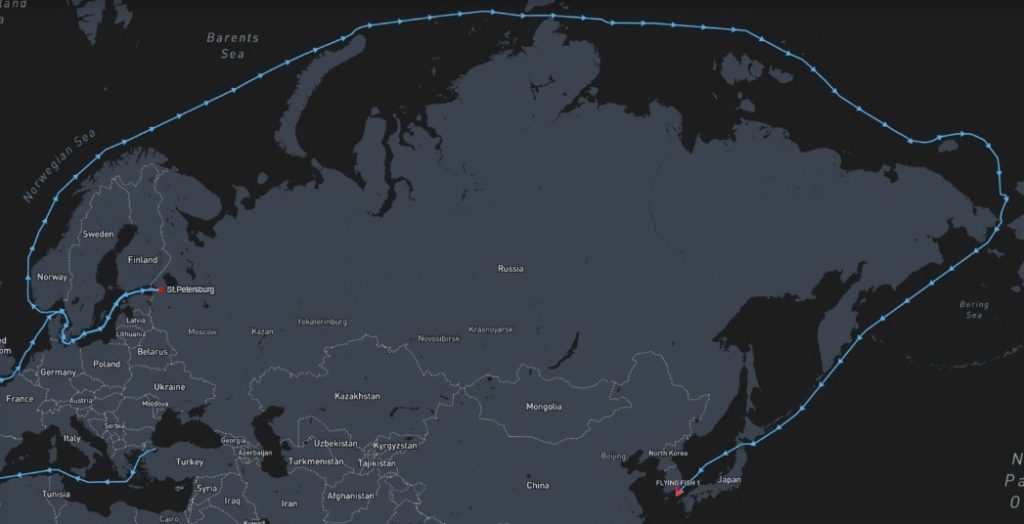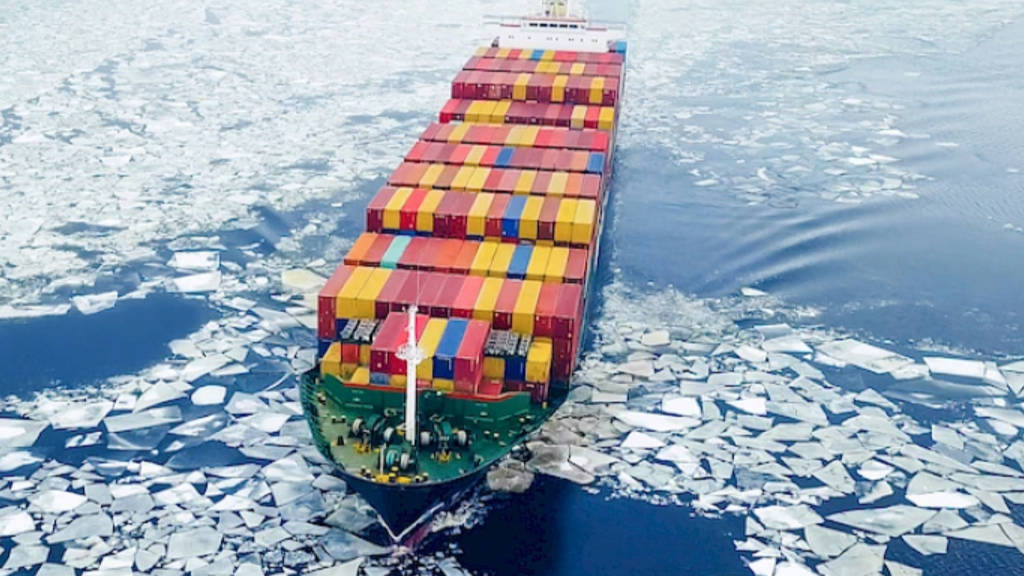The Panamax container ship Flying Fish 1 has just completed its journey along the Northern Sea Route, navigating its way from St. Petersburg to Shanghai in 21 days at an average speed of 16 knots or about 30 kilometers per hour. What makes this voyage significant for the global shipping world and supply chain logistics is that navigating the traditional way through the Suez Canal would have taken two weeks longer. This achievement is now clearly feasible for objective comparison between the two routes.
The ship had originally departed from Istanbul en route via the Baltic Sea to and from St.Petersburg, sailed around the Norwegian coast and then across the Russian Arctic Ocean to Shanghai. The St.Petersburg-Shanghai leg took three weeks. According to Unctad, Panamax vessels currently cost an average of US$10,150 per day, meaning the NSR route was US$142,000 less expensive than the Suez alternative.

Data on the ship’s class, location, speed, flag and destination were recorded by Russia’s SITRO-AIS satellite constellation and transferred to the Russian cloud service for maritime traffic tracking.
The SiAIS tracking system was developed in Moscow by Russia’s Sistema Holdings. The system monitors and collects information from and about 10,000 seaports and 570,000 vessels worldwide. The constellation satellites receive and process several million datum message updates per day. The system is about to become more powerful as several dozen additional satellites are now being prepared for launch by the year end.
The Flying Fish 1 is registered in Panama and operated by EZ Safetrans Logistics based in Hong Kong. It arrived in Shanghai on September 26. The ship, capable of carrying 4,890 containers, marks a new standard for Arctic shipping, with previous ships holding only 1,500-2,000 containers. It did not require icebreaker support.
This route is part of a broader trend, with up to 20 Arctic transits between Russian and Chinese ports taking place this year. According to forecasts by Rosatom the route will see 270m tons of cargo in 2035. Generally, a Panamax vessel ranges from 50,000 to 80,000 deadweight tons (DWTs), implying that Russia predicts between 3,850 and 5,400 Panamax vessels using the route annually within a decade, providing cost savings over the Suez Canal route of between US$546 million and US$767 million per annum.
Further Reading
Northern Sea Route To Have New Eastern and Western Logistics Terminals





